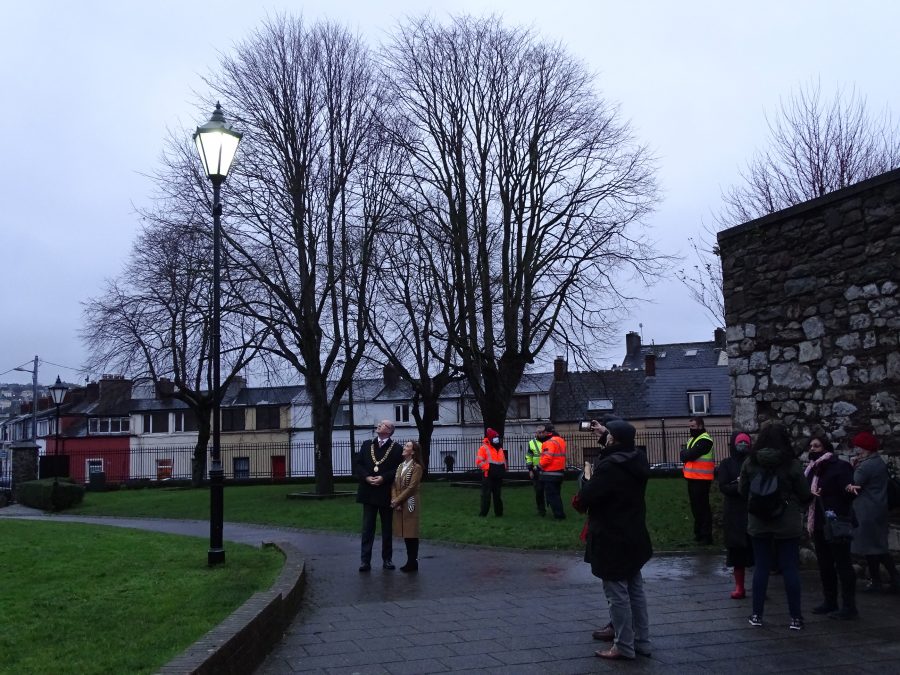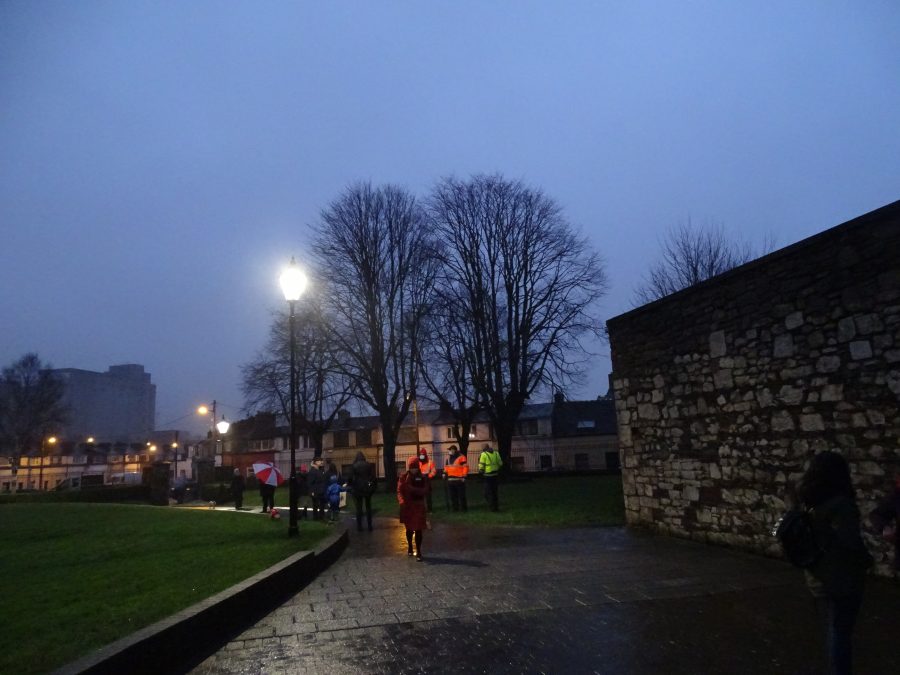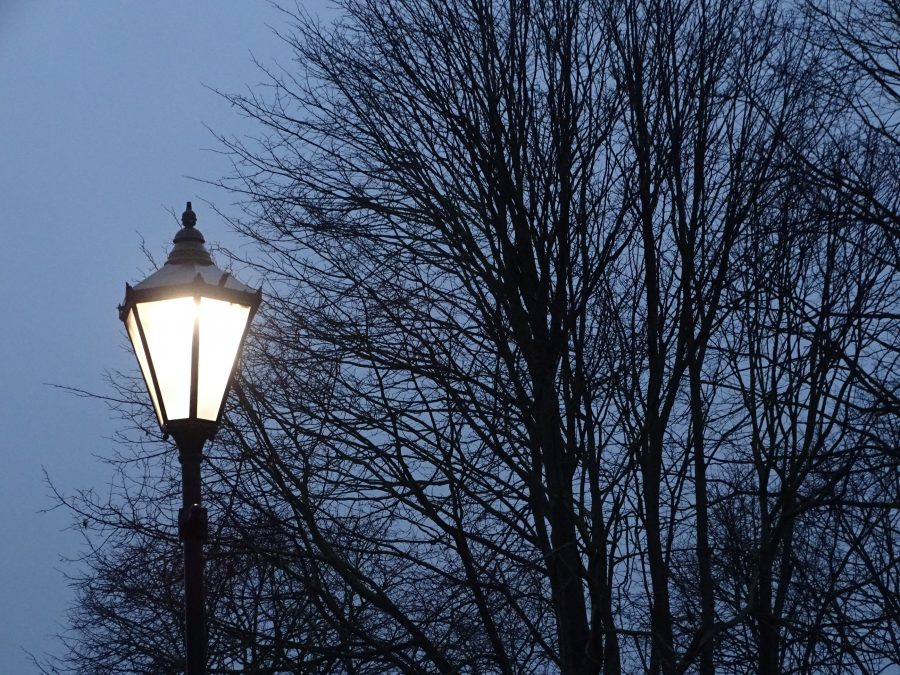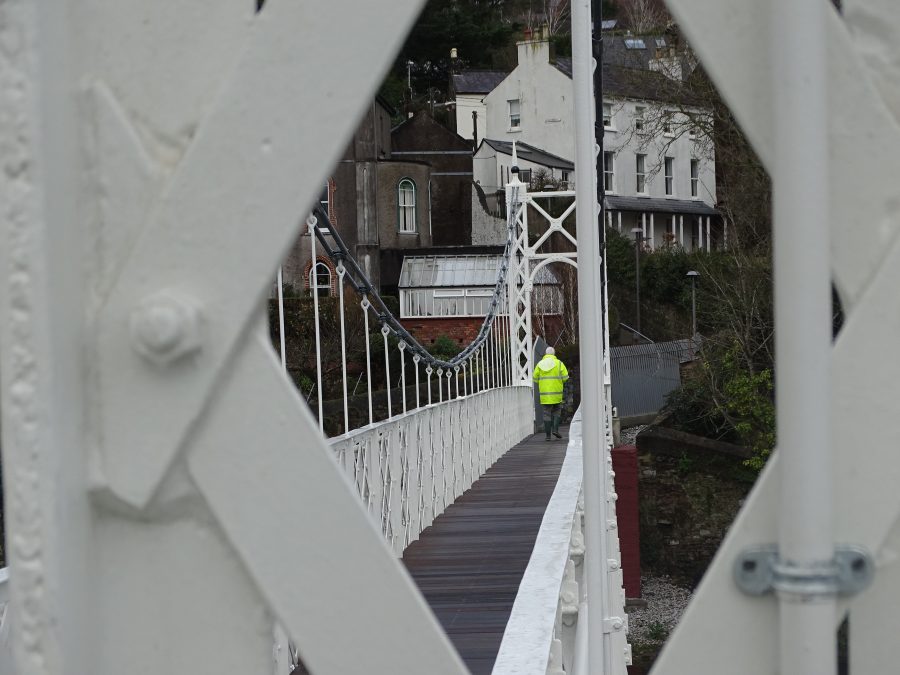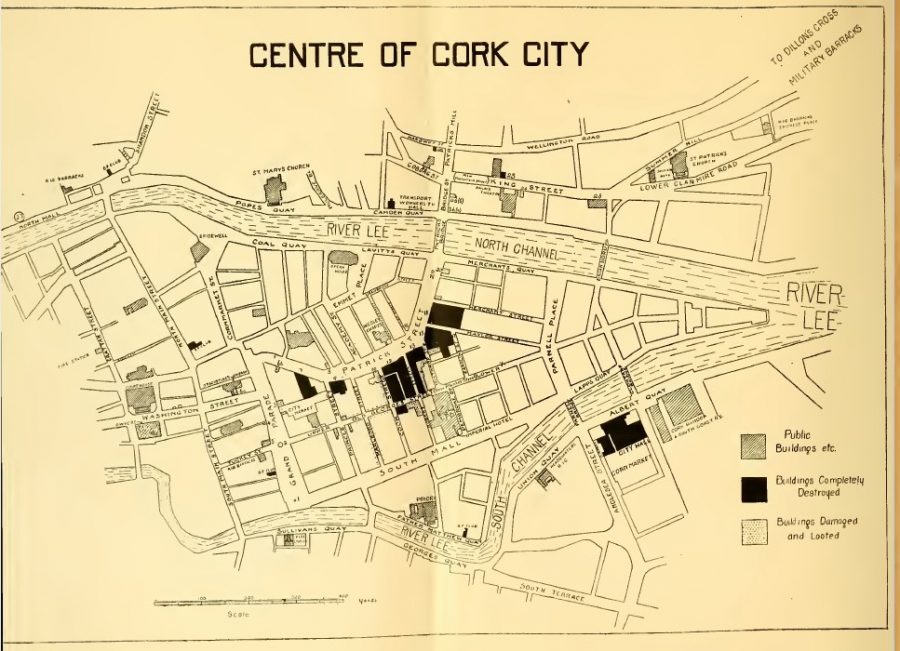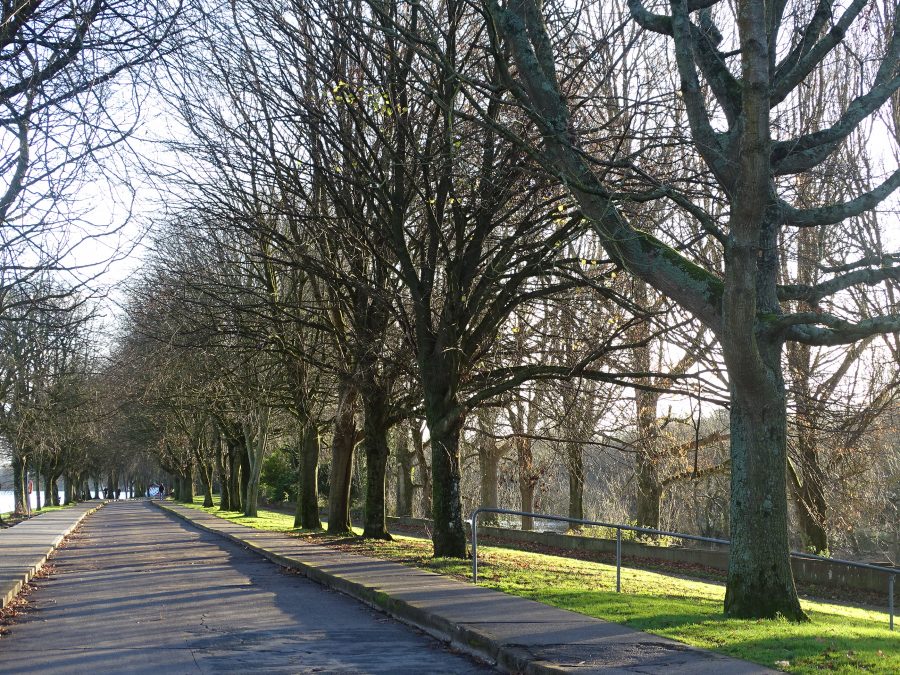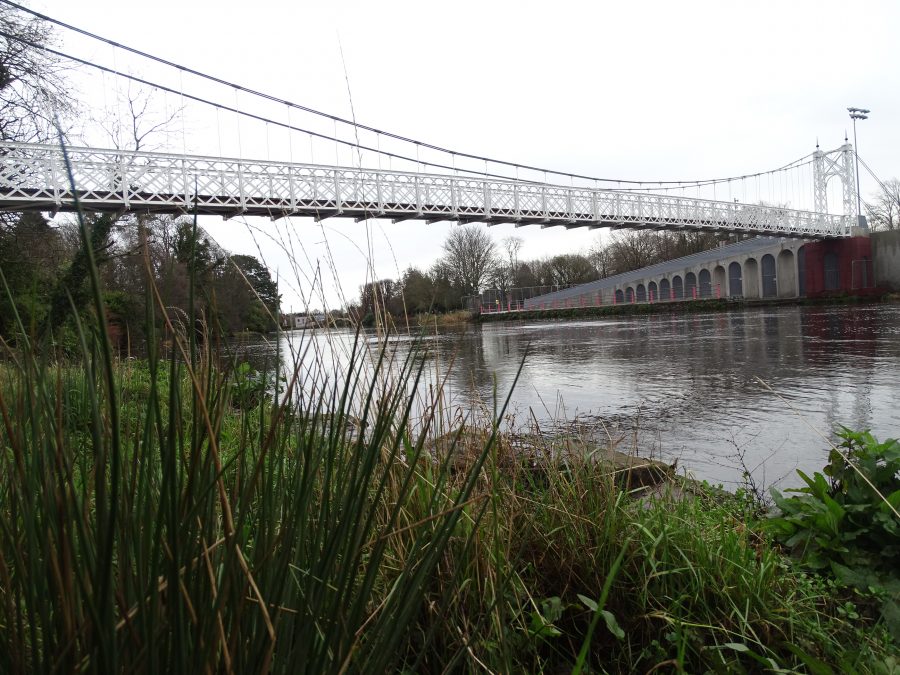
1080a. Daly’s Bridge AKA Shakey Bridge, post refurbishment, December 2020 (picture: Kieran McCarthy).
Kieran’s Our City, Our Town Article,
Cork Independent, 24 December 2020
Celebrating the History of Daly’s Bridge
Over the past two to three years, three bridges in Cork have received much media focus – St Patrick’s Bridge and its cleaning and restructuring, the new Mary Elmes Bridge and its modern design, and thirdly Daly’s Bridge, AKA the Shaky Bridge and its mass cleaning and re-strengthening programme. Such work was spearheaded by Cork City Council.
Perhaps of the three bridges that I have listed the last one, Daly’s Bridge or the Shakey Bridge, opened in 1927, is one which holds the fascination of the public the most. The recent removal of the main body of the bridge to de-clean it off site caused a large tinge of public sadness. Its re-opening this week heralded hope and almost the sense of a valued family member having returned. The bridge’s essence has transcended time from a physical bridging point to one of playfulness, one of fun and one whose shakiness is a key part of Cork’s cultural heritage.
The story of Daly’s Bridge is rich. With the development of Fitzgerald’s Park and the adjacent Rugby Grounds circa 1905, the ferry crossing that had formed a route from Sunday’s Well to Shanakiel came under increasing pressure.
On 28 August 1908 a deputation of residents of Sunday’s Well appeared before the members of Cork Corporation in the then City Hall. Coroner Blake acted as spokesman and noted that he had got a recent letter during that week from Mr Thomas Dooley, proprietor of the ferry at Ferry Walk, stating that he was willing to sell his interest in it (due to his impending retirement) to the Corporation of Cork for £100, if they sought to purchase it.
Coroner Blake outlined that the Corporation had been, as far he knew, owners and proprietors of most of the ferries in the city of Cork, and if they attained Dooley’s ferry rights in question it would be, he believed, “an advantage to the citizens at large”. If the Council thought the proposal a good idea, he suggested that instead of a ferry, a suspension bridge could be erected.
Sir Edward Fitzgerald, councillor, said he believed that the bridge proposal was a necessity and asked that the matter be referred to the Corporation’s Public Works Committee.
On 1 September 1908, the proposed Ferry Walk Bridge was discussed at the Public Works Committee.Sir Edward Fitzgerald said the first thing to be done was to instruct the City Engineer to supply the Committee, at his earliest convenience with the cost of a suspension bridge.
In April 1910, the City Engineer gave particulars regards the site and the approaches to the bridge and a general discussion took place on the question of the situation and character of the new bridge. Shortly afterwards, the proposed cost of a new bridge became a stumbling block for the Corporation to be able to move forward developing the project.
Sixteen years later, the substantial financial contribution by local man James Daly eventually broke the deadlock on funding the suspension bridge project. Born at Moycollop, County Waterford in 1856, James Daly (1856-1942)began his busines life in his native district as a butter and egg merchant. His business acumen was not long in making itself felt, and at an early age he was able to open up as a butter merchant being founder and managing director, of the firm of James Daly and Sons, Ltd., Shandon Street, Dominick Street, and Mulgrave Road. His association with the butter industry extended over 50 years from the 1880s to the early 1930s – over half a century.
Under his own personal supervision James merited for his firm a world-wide reputation and employed many people. In addition to the butter industry, the firm were also proprietors of the Shandon Castle Margarine Factory, which was established until 1905, and erected on the site of the ancient Shandon Castle.
James was one of the trustees of the Cork Butter Exchange. As an agriculturalist, James was well known throughout Cork and Waterford, being the owner of large farms in each of these counties, while he also possessed extensive fishing preserves on the River Blackwater, and game preserves in the same vicinity. James was also a Justice of the Peace, a member of the Cork Chamber of Commerce, and a member of the National Liberal Club of London.
The decision was made by City Engineer, Stephen Farrington that the new bridge should be a steel suspension bridge, a type popular in the early decades of the twentieth century, though few were built in Ireland. The decision was made to purchase a bridge from the English bridge manufacturers David Rowell & Company.
In his 3 February 1927 report, Stephen Farrington said he was notified by Messrs Rowell & Co that the steel erectors were coming over that week to start work on the suspension bridge at Ferry Walk. In late February 1927,the new suspension footbridge was rapidly nearing completion.
The formal opening of Daly’s Bridge took place on Saturday 9 May 1927. Very Rev Canon O’Sullivan presided at the function. Mr M O’Driscoll, PC on behalf of Mr James Daly opened the bridge.
Mr O’Driscoll said that he felt that a very great honour had been conferred on him in asking him to formally open the bridge, which “would do so much to enhance the attractions of the district, and at the same time confer such as substantial benefit on the citizens in general, and on the residents of Sunday’s Well in particular”.
For more information on the story of Daly’s Bridge aka The Shakey Bridge, check out Kieran’s History Trails on www.corkheritage.ie
Happy Christmas to everyone.
Caption:
1080a. Daly’s Bridge AKA Shakey Bridge, post refurbishment, December 2020 (picture: Kieran McCarthy).
